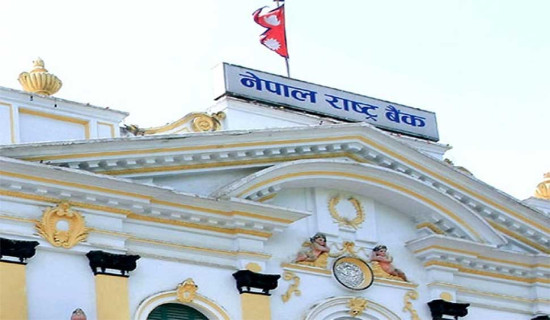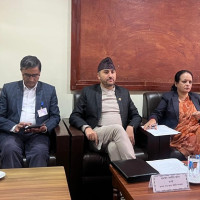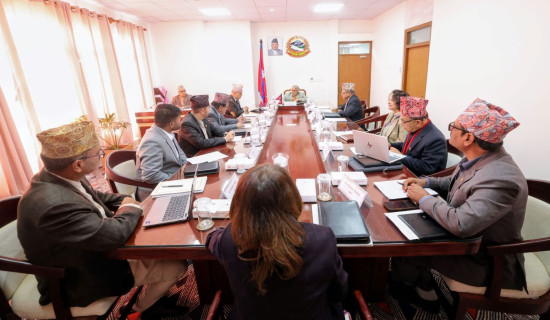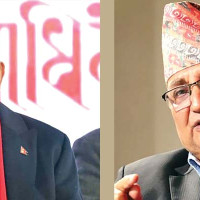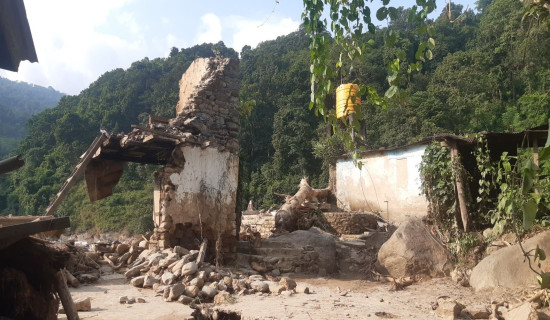- Tuesday, 16 December 2025
Fighting Human Trafficking
Human trafficking is one of the most urgent human rights issues in Nepal, affecting thousands of people, particularly women and girls, each year. Regardless of various domestic legal reforms and international instruments in place, Nepal faces significant challenges fueled by poor socio-economic protection and increased organised trafficking networks. Notably, Nepal's open border with India has worsened the increasing trend of high labour migration, making it both a source and transit hub for the trafficking nexus.
The 2024 Global trafficking in Persons Report issued by the United Nations Office on Drugs and Crime shows a 7 per cent drop in victim detection in Nepal from 2020 to 2023, raising concerns about underreporting, gaps in law implementation, and limited victim protection measures. However, trafficking related convictions rose by 7 per cent, Nepal's rates remain below in terms of global standards, largely due to rampant corruption, bureaucratic inefficiencies, and limited resources, among others.
Open border
Traffickers frequently exploit Nepal's open border with India to transport victims for forced labor and sexual exploitation. Most of them are later transported to Gulf countries such as Malaysia and Southeast Asian countries in the name of employment contracts. The fraudulent recruitment agencies further exacerbate the situation by preying on job seekers with false promises.Nepal's migration policies that restrict a ban on women under 40 visiting alone to Gulf nations have forced many into undocumented migration channels, increasing their vulnerability.
Domestic workers, particularly women who used such methods, are forced to remain silent even in the condition of withheld wages and an abusive working environment. The latest incidents highlight that social media has become a powerful tool for traffickers who use it to entice prospective individuals with fake job offers. While women and girls remain primary targets, an increasing number of men and boys are also falling victim to the fraudulent recruitment scams.
A 2023-24 WOREC report found that the highest number of human trafficking cases, highlighting 58 per cent of victims under the age of 18. Moreover, 17 per cent of traffickers were identified as community members, underscoring the local nexus of the crisis. However, Nepal has embraced anti-trafficking frameworks, but enforcement remains a challenge. In this scenario, there exist critical gaps in specialised training for the law enforcement agencies, lack of proper coordination between agencies and inadequate funding for a victim support system that aggravate the problems further.
International case studies reflect that the higher trafficking detection rates are reported in countries where strong victim support mechanisms are functional. In Nepal, victims struggle with reintegration due to limited access to shelters, legal aid, and psycho-social counselling. As a result, many face rejection from their communities, worsening their trauma. In this respect, studies in behavioural science demonstrate that trafficking prevention requires simplified reporting mechanisms, trauma-informed law enforcement training and targeted community awareness campaigns that enhance victim identification and support services.
In this context, Nepal is a party to numerous international instruments, including the UN Convention against Transnational Organized Crime, 2000 and the Palermo Protocol, which defines trafficking as the recruitment, transportation, harboring or receipt of persons through coercion, deception, or abuse of power for exploitation. Definition of exploitation in a broader sense includes forced labour, sexual exploitation, slavery, servitude, and organ removal. Most importantly, any consent given under coercion is considered invalid. Further protocol also states that any recruitment, transportation, or receipt of a child for exploitation is classified as trafficking, regardless of whether coercion was involved.
Additionally, the SAARC Convention on Preventing and Combating Trafficking in Women and Children for Prostitution (2002) is in force, to which Nepal is a party that emphasising regional cooperation in addressing trafficking across South Asia. In order to comply with these frameworks, Nepal has enacted the Human Trafficking and Transportation (Control) Act, 2007, which criminalises trafficking and prescribes severe sanctions and penalties. It aligns with the Constitution of Nepal (2015) which guarantees fundamental rights against exploitation. Furthermore, Supreme Court rulings have also reinforced these provisions, emphasising law enforcement and victim protection mechanisms.
Apart from these legal agreements and court verdicts, various government and non-governmental agencies also play pivotal roles in combating trafficking in Nepal, such as the Ministry of Women, Children, and Senior Citizens, along with provincial and local governments, which lead anti-trafficking initiatives. Further, the National Human Rights Commission, the National Women's Commission, and law enforcement agencies are in place. Likewise, CDO offices, Nepal police, and the Office of the Attorney General oversee legal enforcement. Furthermore, key stakeholders like Maiti Nepal and WOREC Nepal, among others, are playing vital roles in providing rescue, rehabilitation and reintegration services to victims, in collaboration with government agencies, UN and INGOs.
Despite these efforts, Nepal needs to act in coordinated action, with integrated data management, and an effective and efficient response system. For example, current anti-trafficking measures focus heavily on the supply side, establishing institutions but largely ignore addressing demand-side mechanisms that often protect and promote trafficking networks. Many programmes prioritise prosecution over awareness and advocacy but largely fail to foster a strong community-based protection system at the community level.
Awareness programmes
In light of this, an integrated community-led protection mechanism is are must, which includes effective behaviour change programmes, accessible social welfare services, and robust legal safeguards. Furthermore, a cost-benefit analysis of anti-trafficking programs is highly required to ensure resource efficiency. Rather than solely concentrating on institutional expansion, Nepal should focus on enhancing awareness, fostering community resilience, and strengthening grassroots protections. Through this lens, the coordination of the entire governance structure — federal, provincial, and local levels — is vital to effectively smash the chain of human trafficking and to protect vulnerable communities concerned.
Ultimately, a multi-sectoral approach by strengthening legal frameworks, fostering coordination and collective action among law enforcement agencies, including international collaboration, is equally essential to dismantling trafficking networks. By prioritising prevention over prosecution, community protection, economic security, digital safety, and stringent legal enforcement, Nepal can safeguard its most vulnerable citizens and break the cycle of exploitation to ensure a future free from trafficking.
(The author is an advocate.)



